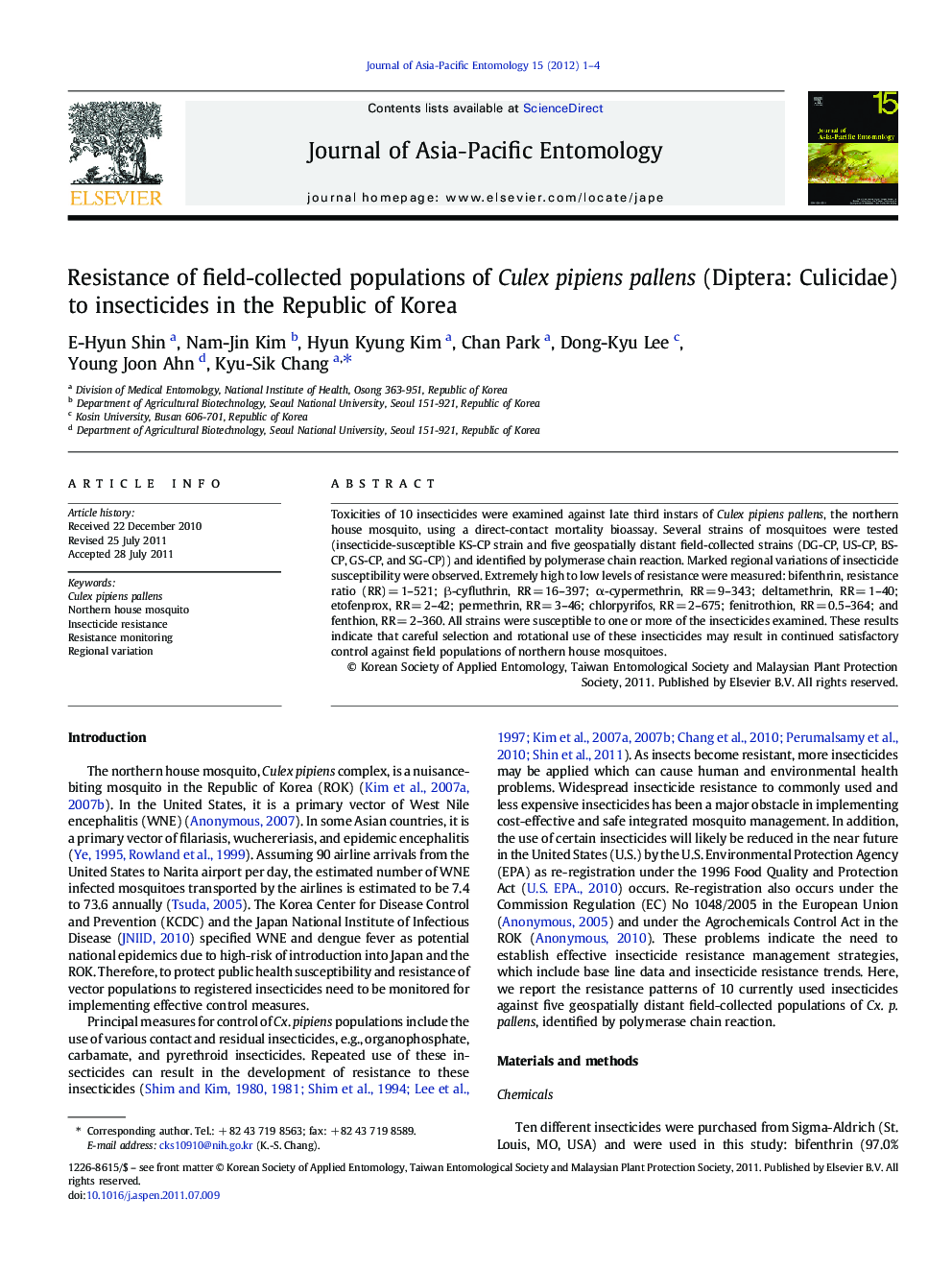| Article ID | Journal | Published Year | Pages | File Type |
|---|---|---|---|---|
| 4524775 | Journal of Asia-Pacific Entomology | 2012 | 4 Pages |
Toxicities of 10 insecticides were examined against late third instars of Culex pipiens pallens, the northern house mosquito, using a direct-contact mortality bioassay. Several strains of mosquitoes were tested (insecticide-susceptible KS-CP strain and five geospatially distant field-collected strains (DG-CP, US-CP, BS-CP, GS-CP, and SG-CP)) and identified by polymerase chain reaction. Marked regional variations of insecticide susceptibility were observed. Extremely high to low levels of resistance were measured: bifenthrin, resistance ratio (RR) = 1–521; β-cyfluthrin, RR = 16–397; α-cypermethrin, RR = 9–343; deltamethrin, RR = 1–40; etofenprox, RR = 2–42; permethrin, RR = 3–46; chlorpyrifos, RR = 2–675; fenitrothion, RR = 0.5–364; and fenthion, RR = 2–360. All strains were susceptible to one or more of the insecticides examined. These results indicate that careful selection and rotational use of these insecticides may result in continued satisfactory control against field populations of northern house mosquitoes.
Graphical abstractFig. 1. Resistance rate (RR) of five field collected populations of Culex pipiens pallens to 10 insecticides. * Resistance ratios (RRLC50): LC50 value of each field collected populations of Culex pipiens pallens/LC50 value of susceptible strain of Culex pipiens pallens.Figure optionsDownload full-size imageDownload as PowerPoint slideHighlights► We test susceptibility and resistance of six field Culex pipiens populations on 10 insecticides. ► The results revealed locally different level of susceptibility and resistance. ► Careful selection and rotational use of insecticides need for continued satisfactory control to field mosquito populations.
